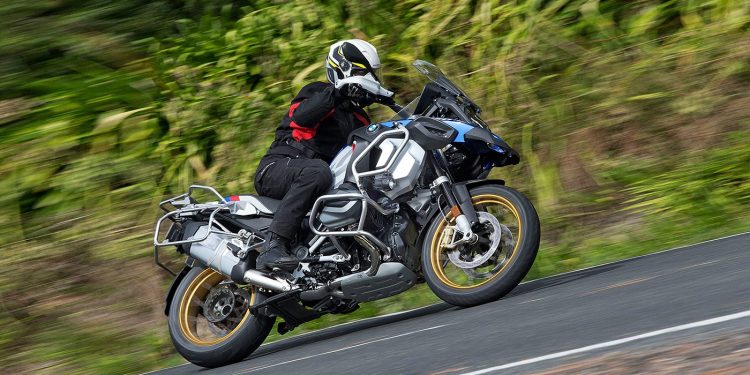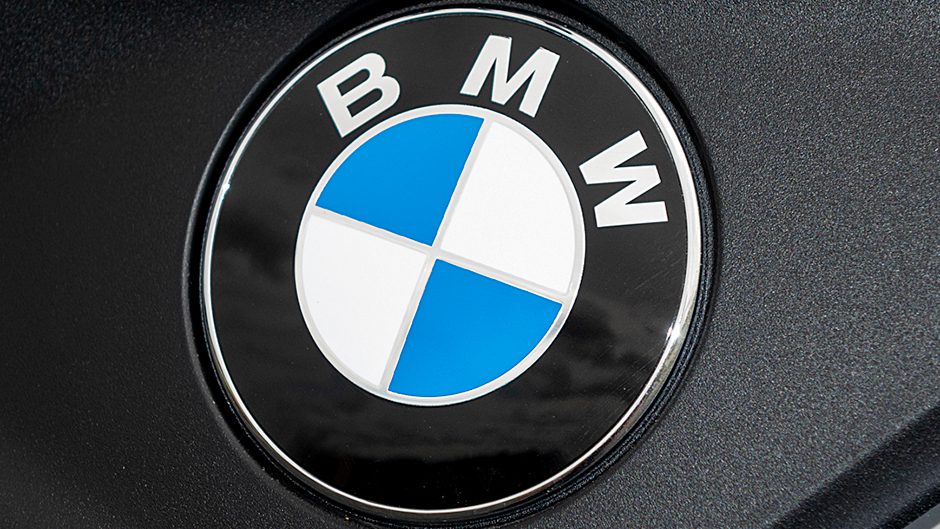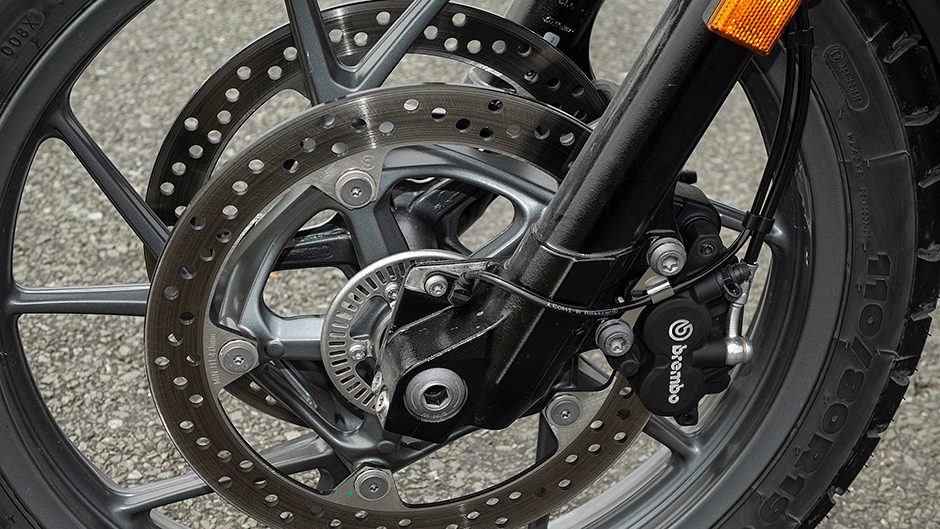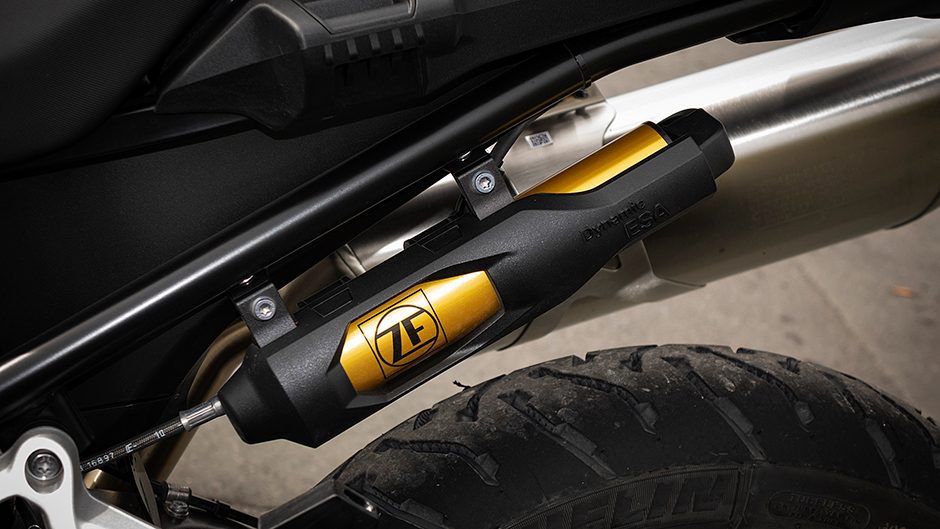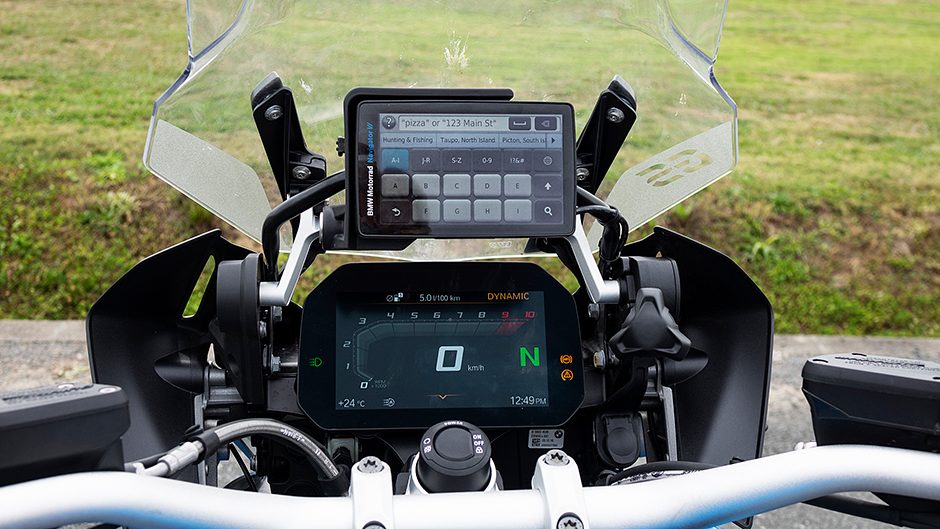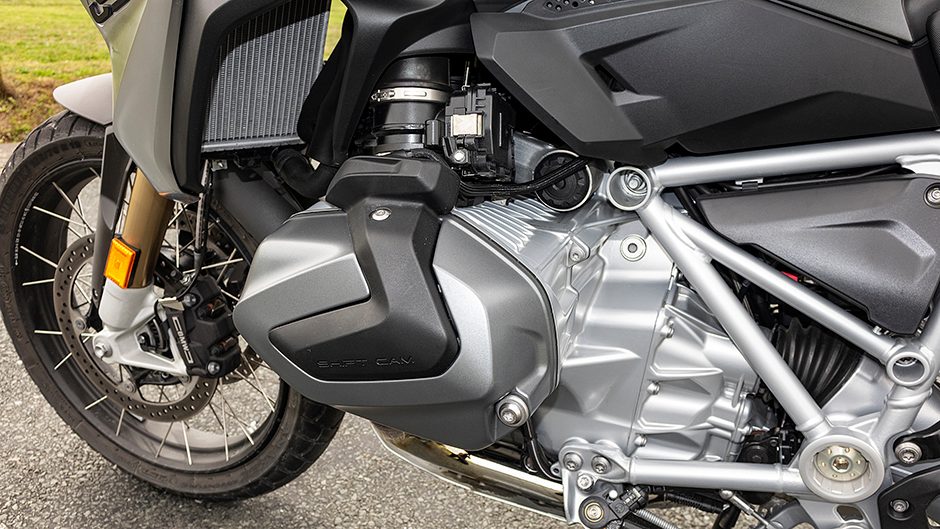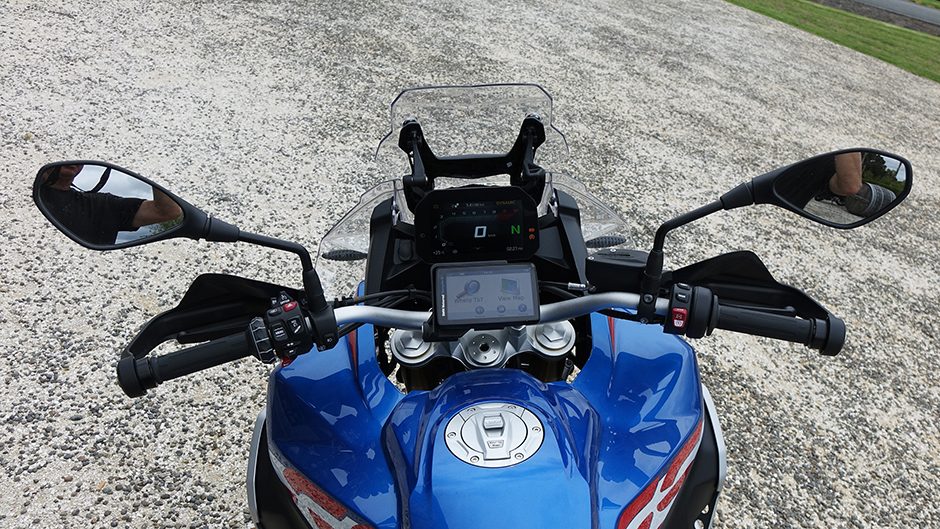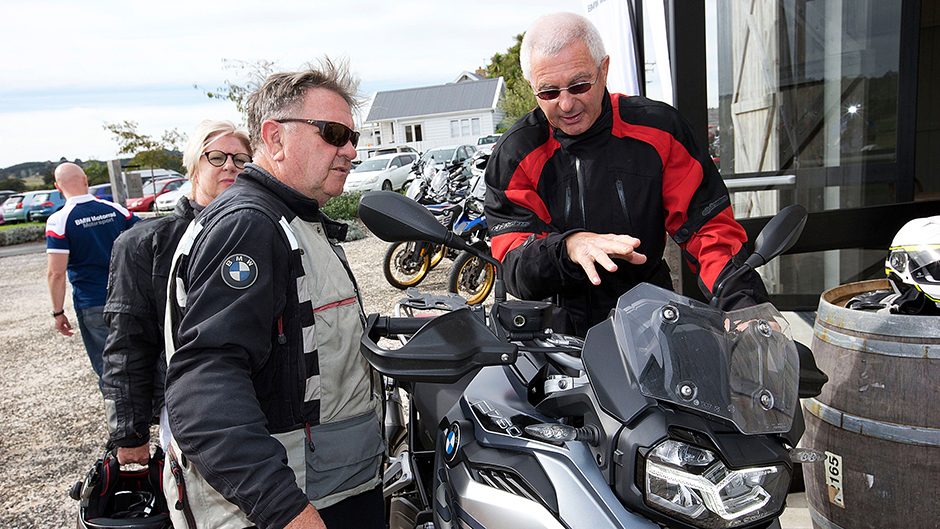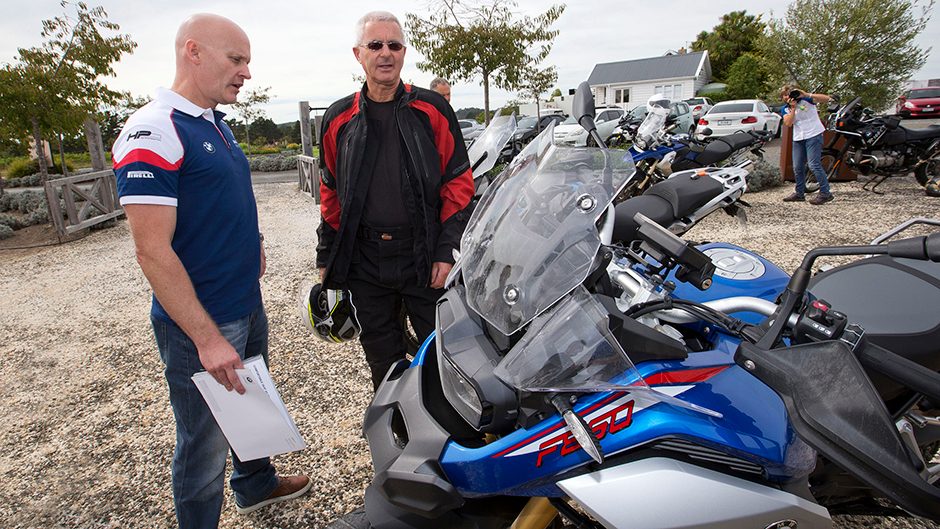BMW GS Launch
Words Peter Louisson | Photos Tom Gasnier
BMW Motorrad recently hosted an ADV event where all its new models, the baby GS excepted, were available to ride. We sampled the lot, including the new boss, the R 1250 GS.
Over the past year, all models in BMW’s dual purpose GS range have been renewed. All except the G 310 GS, which is a relatively new machine, and the only one missing when the press and other guests were invited to ride the range recently.
The ride day out of Waimauku was mainly about the all-new R 1250 GS, the enlarged flat twin now with VVT, and competing on a more level playing field with Ducati’s Multistrada 1260. But it was also an opportunity to ride the other new twins in the line-up, such as the F 750 GS to see how it compared with the F 850 GS we reviewed last month.
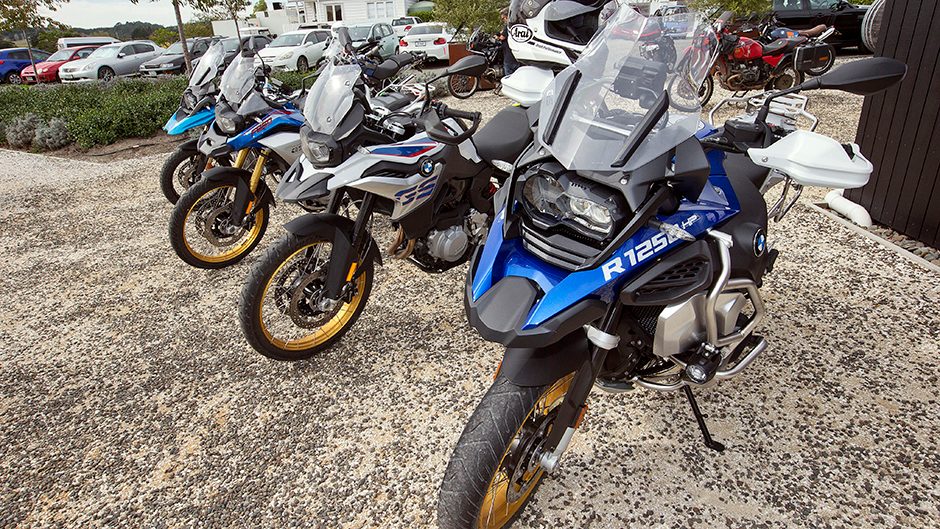
Can the smaller GS keep up?
It was the F 750 we rode first, intrigued to see whether it would pale against the 850. Initial impressions suggested not.
A middle-aged couple arriving on a 1995 R 80 reckoned the 750 had more than enough power and torque for their needs. And comfort too. They didn’t ride anything else on the day! After a 30km loop into the hills, we were far from underwhelmed. In fact, it’s really quite difficult on road to separate this from the 850. The F 750 GS is merely a detuned version of the F 850 GS – it gets milder cams, and a different intake and ECU – but the disparity on paper doesn’t seem to translate to discernible differences on road.
By the numbers, the F 750 is down by 13kW but there’s a smaller difference in torque (83 vs 92Nm) so during everyday riding they feel much the same. Use 91 ULP in the F 850 and there’s only 3Nm more torque. At 100km/h the tacho needle points at 3800rpm on both, and each pulls convincingly in top gear from about 85km/h.
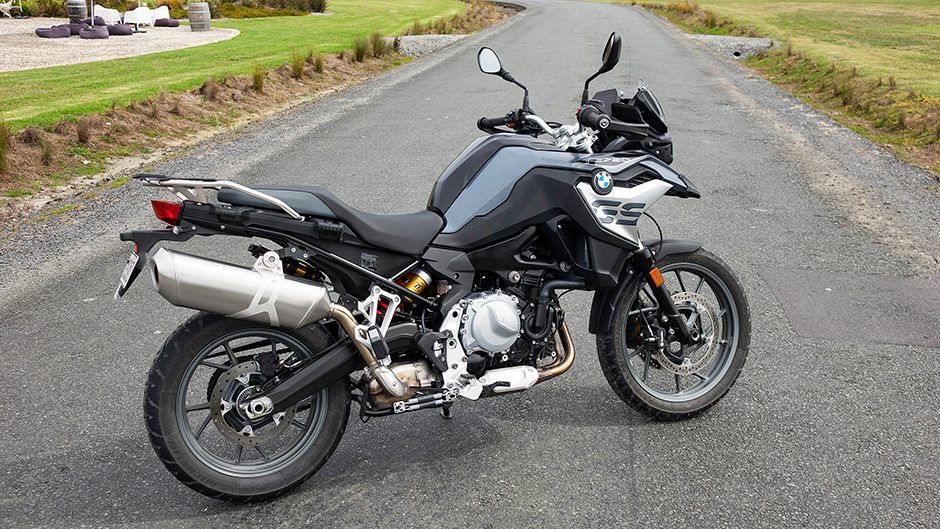
Both of them seem to spin to about 9500rpm but with both bikes you only ever need to go for gold if there’s not much room to pass. Even then a single downshift is all that’s required. Or you could just wait for a safer opportunity, ride to survive and all. Both the 750 and 850 are grunty middleweights and the new engine really is a leap forward on the original. It’s also creamy smooth. Whether because of the new firing intervals or the adoption of counter-rotating balancer shafts, these mills are virtually vibe-free in operation.
Mirrors on both bikes show exactly what’s following. Most of the time there will be nothing. Ride quality too is only ever polished. They both have electronic rear suspension, and in the firmest Dynamic mode you not only get the best control, being rock solid in the bends, but on the straights the ride is sublime.
Push to Road mode for urban work if you want, but at speed there’s a bit more waft and untoward motion at the rear. We soon reverted to Dynamic. The more I ride the F series the more I’m convinced that the quick shifter is best avoided going down the box; things are much smoother using the clutch. But a brief easing of throttle pressure ensures the smoothest of upshifts, no clutch needed.
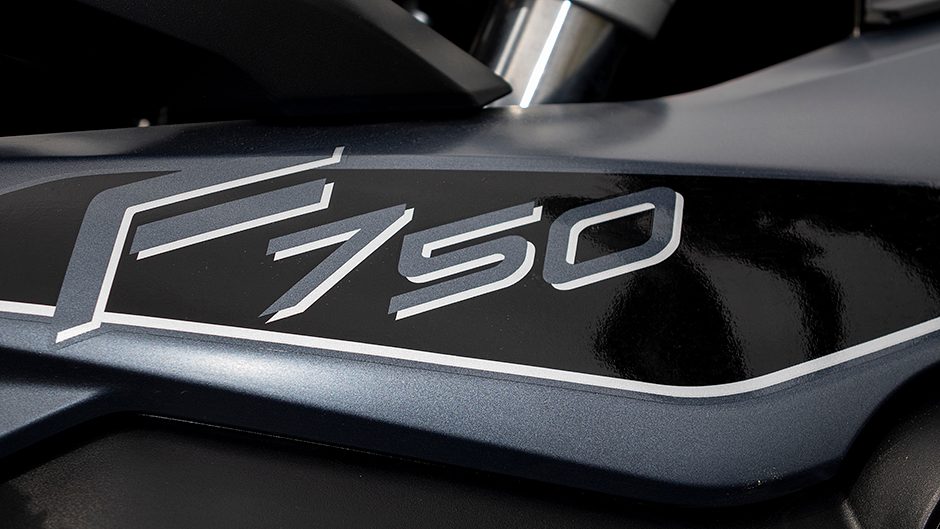
Onto the 850
We had a crack on the Rally F 850, as opposed to the GS model we’d ridden previously. This is a bit more off-road oriented than the GS, with crash bars, pannier riding lights, different suspension, bigger tank and a rather clever moveable screen. You just push the lever this way or that to raise or lower it. We preferred it set at its lowest where it was less noisy. Most folk will probably opt for the standard GS which also looks a bit better; besides the Rally is rather beefy and costs $3k more.
All of the F GS variants have good brakes, entirely up to the task, with Brembo non-radial calipers. Kiwi bikes also get all the available riding modes, plus the overseas ‘extras’ as standard, like a smart key, quickshifter, TC, TFT display, LED lights, heated grips, cruise control, and centre stand as standard. Oddly for NZ, the F 750 is outselling the F 850. Maybe folk have cottoned on to the fact that performance is much the same, so why not save $2k ($23,990).
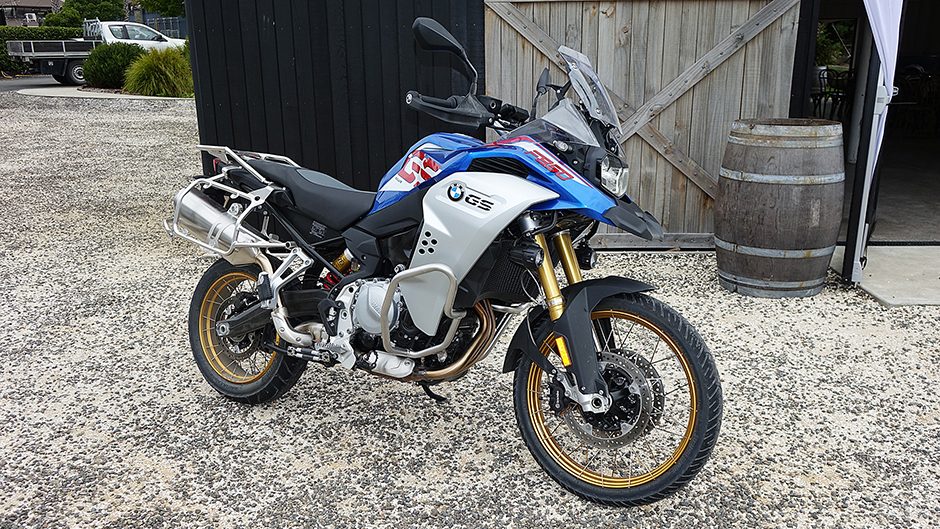
Of Shiftcam and Shaft Drive
For model year 2019, BMW has introduced a new 1250 four-valve boxer twin engine with VVT dubbed “Shiftcam”. It will eventually power the entire R family. The expanded capacity from 1170 to 1254cc derives from a bigger bore and longer stroke. Naturally, the VVT mechanism produces a wider spread of torque and better low- and high-speed running. The shift to the high-lift cam occurs around 6000rpm and is seamless. Peak power of 100kW arrives at 7750rpm but it’s the substantial river of torque, 143Nm of it, peaking at 6500rpm that proves so intoxicating on road.
That’s a lift of 14 per cent over the R 1200 GS, and it’s evidently accompanied by a four per cent fall in fuel use and emissions. The torque is addictive, the big slug of twist accompanying revs you use 90 per cent of the time. Where the F 750 and 850 will grudgingly pull away from a low of 2000rpm, they’re really happier above 3000rpm. Not the 1250; it will pull smoothly from as low as 1500rpm without having a hissy fit. And the fuel use indicator suggested no difference from the middleweights (5.0L/100km). With a 20L tank that means 400km on the trot. While it has been some years since we last rode an R 1200 GS, I don’t believe it hauled quite like this.
You can slot it into top and forget about downshifting thereafter. This flattens hills in top with improbably low revs showing. There’s something different-special about the handling of bikes with flat-twin power plants. They seem to drop into corners with real grace. So it is with the 1250 GS. Despite being over 250kg brimmed, once moving this feels like the middleweights we’d just gotten off, only it’s easier to get turned. Not that the Fs are reluctant, but you can kind of understand why the R 1200 GS has become the big bore benchmark ADV; it engenders cornering confidence and feels like it’s got your back. The brakes are simply superb in their power and precision too, even sharper than those of the F twins, with radial calipers.
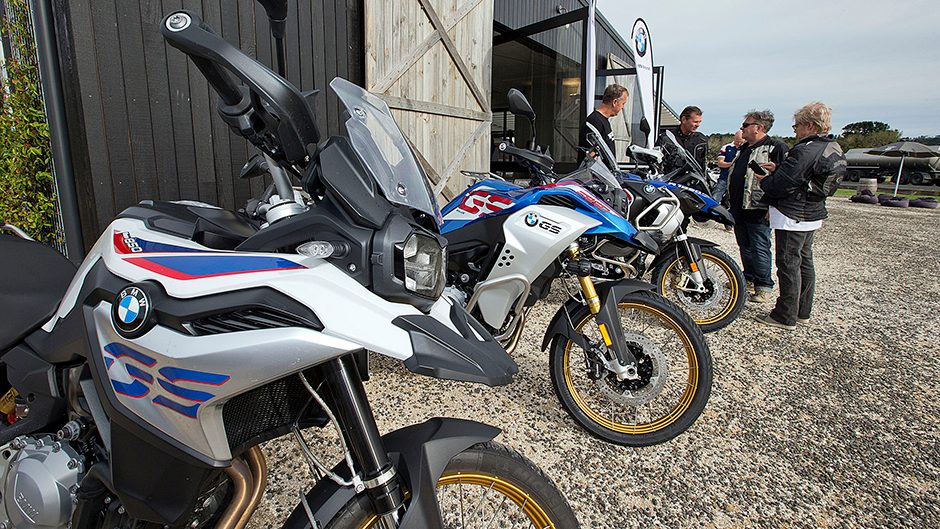
The R 1250 GS is loaded to the gunwales with gear, getting all that the F 850 GS has and more, including hill start control and dynamic and corner braking control. There’s also wiring for a Garman nav screen ($1500), while sports suspension adds $500.
Both this and the blue, white and red HP variant cost $34,990. The GS A with the bigger 30L tank, spotlights, crash bars and pannier racks goes for $36,990. New 1250 GS competes with Ducati’s Multistrada 1260 S (which costs $1000 less) while both are a bit more expensive than KTM’s 1290 Super Adventure which doesn’t feature VVT.
All three are top of the range ADVs and their level of sophistication shows just how important this sector has become. The R 1250 GS with shaft drive vies once again for the title of the ultimate globetrotter.
| Model | BMW R 1250 GS | Price | $34,990 |
| Engine | 1254cc boxer twin, VVT, 100kW/143Nm | Drivetrain | 6-speed, shaft final drive |
| 0-100km/h | 3.60sec | 100-0km/h | n.a.m |
| 80-120km/h | n.a. sec | Weight | 268kg |


